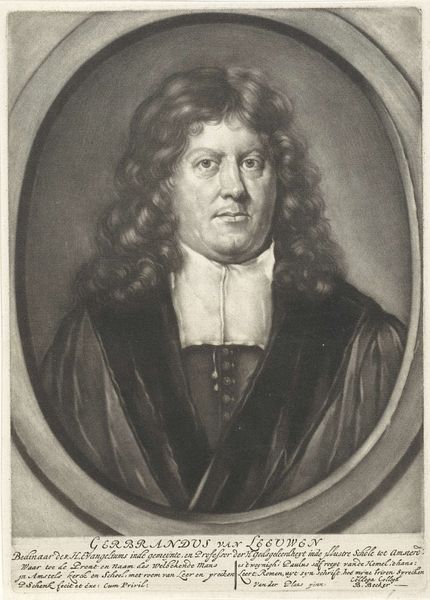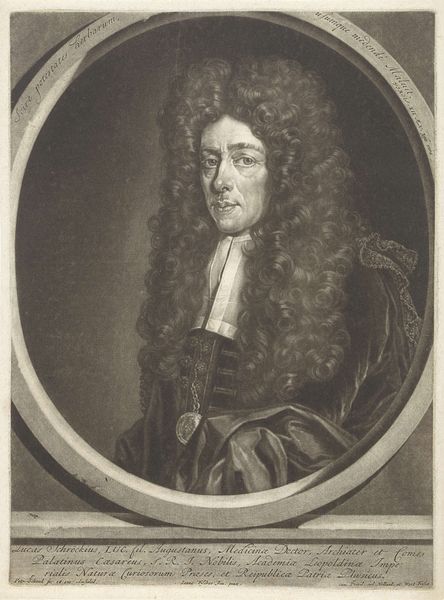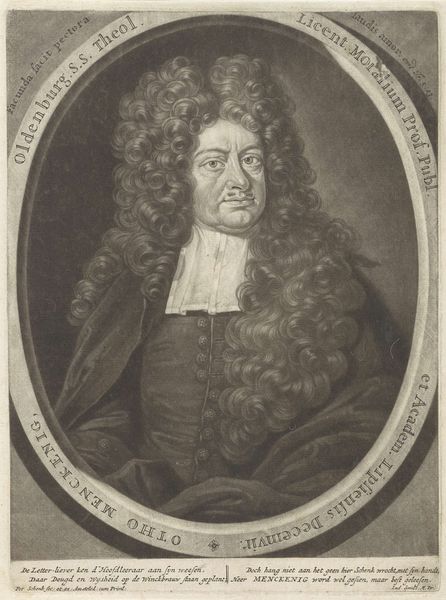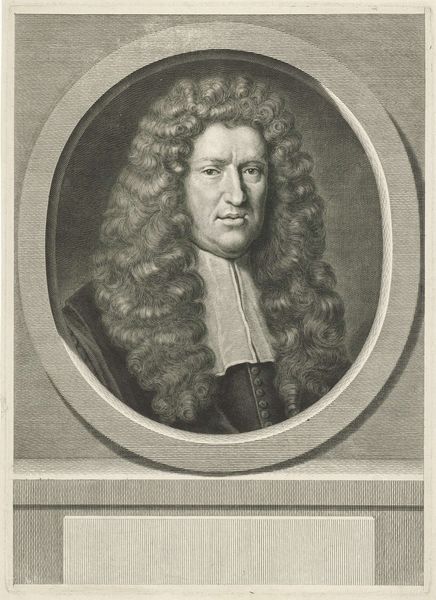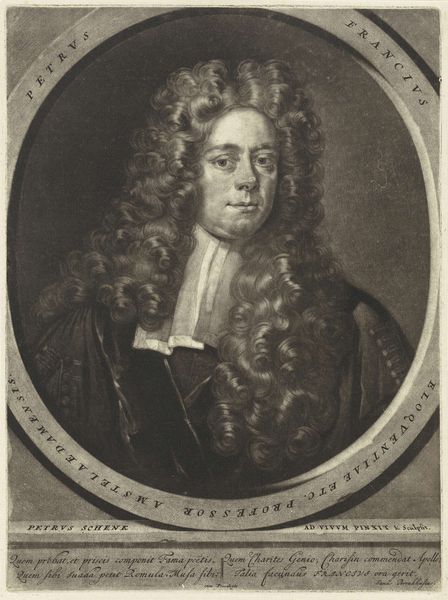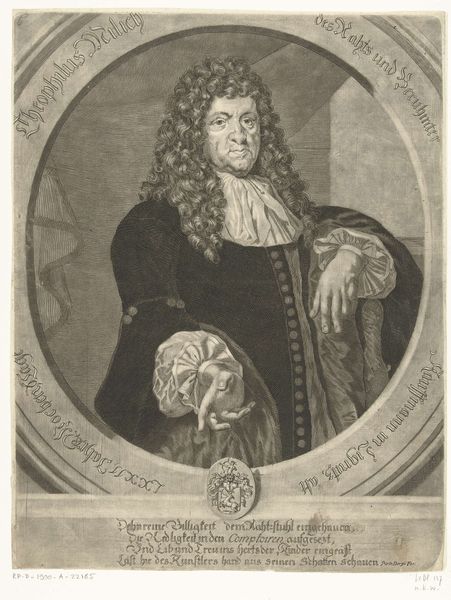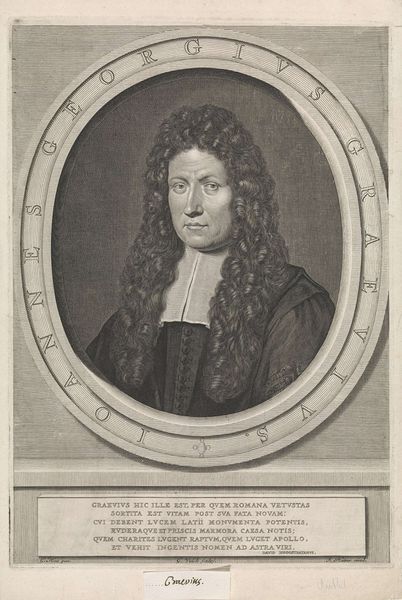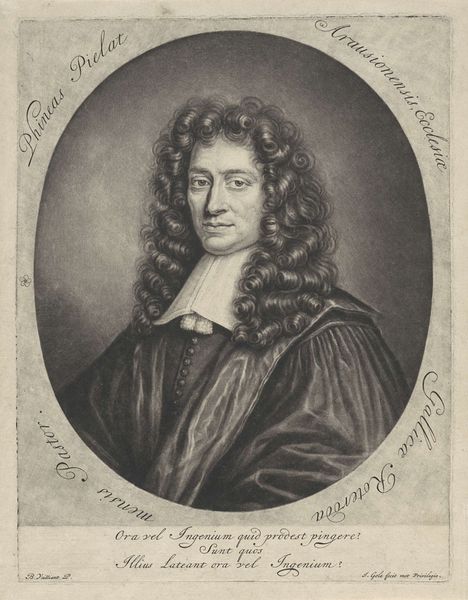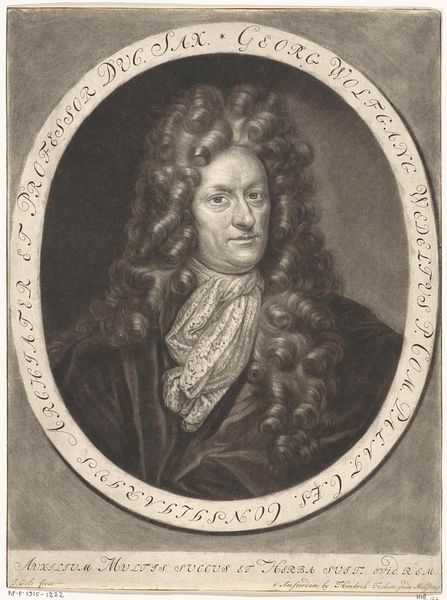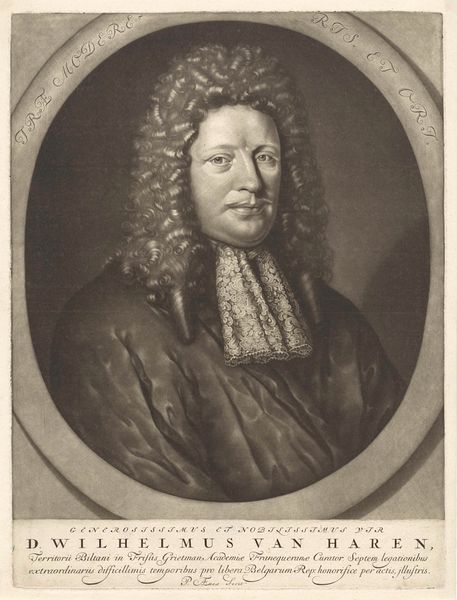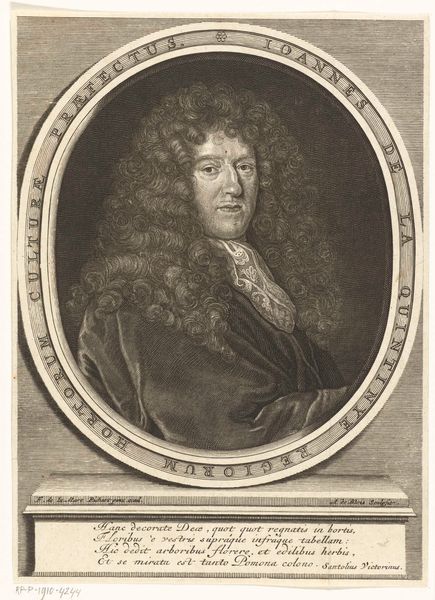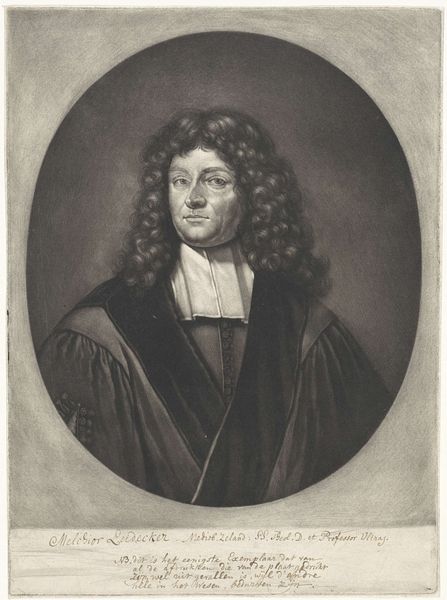
engraving
#
portrait
#
baroque
#
portrait reference
#
academic-art
#
engraving
Dimensions: height 285 mm, width 211 mm
Copyright: Rijks Museum: Open Domain
Editor: Here we have "Portret van de filoloog Johann Georg Graevius", a black and white engraving hanging here in the Rijksmuseum. It was made sometime between 1670 and 1713 by Pieter Schenk. That wig is something else! It definitely makes a statement. What jumps out at you when you look at this piece? Curator: Well, first, that wig *is* quite something, isn’t it? Think of it as visual shorthand. It practically screams 'Baroque scholar!' More seriously though, that elaborate hair is counterbalanced by the somber clothes, and how his eyes draw me in. His gaze is very direct and intellectual, wouldn’t you agree? It seems very characteristic of the Baroque interest in human drama, don't you think? Editor: Definitely, there's something powerful in the contrast, and it keeps the portrait from being too…frivolous, I guess? I didn't really think about what that hairstyle conveyed. The Latin inscription underneath; what’s its function here? Curator: Ah, yes! The inscription praises Graevius and connects him to both memory (Mnemosyne) and the arts (Apollo). Think of it as the 17th-century equivalent of a LinkedIn endorsement – highlighting his intellectual virtues. It tells us how Graevius wanted to be seen – not just as a man, but as a man of profound learning and creativity. Do you feel that comes across? Editor: I think I get it! It’s all about crafting an image, making a statement about status and intellect. This engraving feels much less static and stuffy now, actually, knowing about this purpose. Curator: Exactly! Sometimes, even the smallest details in a portrait – a wig, an inscription – can unlock a whole world of meaning. I’m glad it clicked for you. Editor: Me too. I never thought I’d get so intrigued by a Baroque wig, of all things! Thanks for that new perspective!
Comments
No comments
Be the first to comment and join the conversation on the ultimate creative platform.
